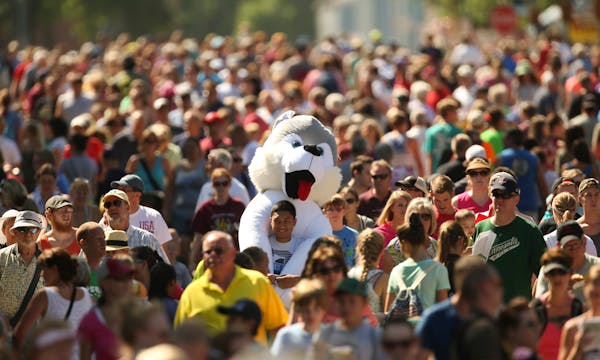Why isn't Isle Royale a part of Minnesota?
Listen and subscribe to our podcast: Via Apple Podcasts | Spotify | Stitcher
Isle Royale sits roughly 20 miles east of mainland Minnesota and 55 miles west of Michigan's Upper Peninsula, yet the island in Lake Superior belongs to Michigan. But why?
That's a question Andrew Heintz has pondered for years. Heintz, a Star Tribune reader from Golden Valley, is an avid hiker who has backpacked along Minnesota's North Shore, but has yet to cross Isle Royale off his bucket list.
The query is not unusual. "A Minnesota backpacker or boater will ask the question ... quite regularly while a Michigan one won't ask it at all," said Timothy Cochrane, a former Isle Royale park ranger and author of a book about the Ojibwe and Isle Royale.
It's also the latest entry to Curious Minnesota, our community-driven reporting project that invites readers into the newsroom to ask questions they want answered.
The answer to Heintz's question can be traced to faulty maps, "copper fever" and the dispute over a strip of land in northern Ohio, but first we first have to ask why the island belongs to the United States at all. Isle Royale is, in fact, closer to Canada than either Minnesota or Michigan.
America's Founding Fathers had something to do with it. In 1783, Benjamin Franklin and John Adams, among others, signed the Treaty of Paris, an agreement which ended the Revolutionary War and established the nation's borders.
American negotiators might have been interested in Isle Royale's copper deposits and persuaded their British counterparts to draw the American border north of the island.
"There's this age-old rumor that somebody whispered in [Franklin's] ear and that he sort of fudged the line up and around a big island close to the Canadian border," said Seth DePasqual, the park's archaeologist. "The question is did he really know?"
It's unclear how much early European explorers knew about the area's copper reserves, but archaeological evidence suggests that Native Americans began mining copper on the island — which they called Minong or "The Good Place" — at least 4,500 years ago, DePasqual said.
The era's maps, which showed Isle Royale south of its actual location, also bear some of the responsibility.
Once part of the U.S., the state designation came down to timing.
"That's the bottom line. Michigan territory and the state of Michigan were created significantly before Minnesota, and that's why Isle Royale was included within those boundaries," said Ken Vrana, director of the Isle Royale Institute at Michigan Technological University.
Michigan became a state in 1837 while Minnesota gained its statehood more than 20 years later in 1858. This westward wave of settlement allowed Michigan to claim Isle Royale without challenges from neighboring states.
Nonetheless, a near-war between Michigan and Ohio led to Isle Royale's official designation after a dispute about their shared boundary.
Michigan wanted the border drawn east from the bottom of Lake Michigan. That boundary ran south of Maumee Bay, an area near present-day Toledo and a shipping and farming hub, said Bob Myers, the director of education at the Michigan Historical Society. Ohio's preferred border made land around Maumee Bay its territory.
The border debate escalated when both states mobilized their militias in 1835. The conflict didn't last long, resulting in a single casualty.
The states compromised, agreeing that Ohio would get the border it wanted, and, in exchange, Isle Royale and much of the Upper Peninsula would join Michigan.
And that's how Minnesota got cut out of the Isle Royale equation. History just wasn't on its side.
Emma Dill is a University of Minnesota student on assignment for the Star Tribune.
---
If you'd like to submit a Curious Minnesota question, fill out the form below:
Read more Curious Minnesota stories:
Where did the term Minnesota Nice come from, and what does it really mean?
Why does Minnesota tax Social Security benefits?
Why is Uptown south of downtown in Minneapolis?
Why can't Minnesotans figure out how to zipper merge?
What percentage of Minnesotans spend their entire lives here?
Were Minneapolis' skyways first created to combat the cold – or something else?
Why hasn't Minnesota ever produced a U.S. president?
How did Minnesota's indigenous people survive the extreme winters?


